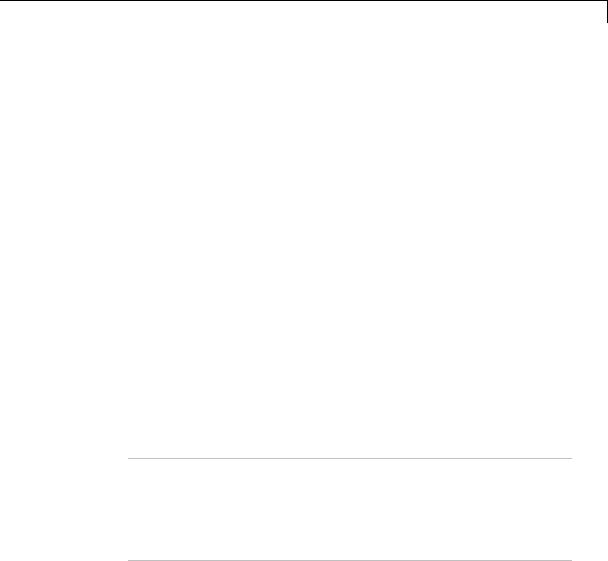

sfnew
|
|
sfnew('-Mealy','MyModel') |
|
|
|
|
Create a model called MyModel with an empty chart that uses only |
|
|
Moore semantics: |
|
|
|
sfnew('-Moore','MyModel') |
See Also |
sfhelp | sfprint | sfroot | sfsave | stateflow |
|
How To |
• |
“Creating a Stateflow Chart” |
|
• |
“Creating Mealy and Moore Charts” |
|
• |
“Building a Simulink Model with a Stateflow Truth Table” |
2-11

sfopen
Purpose
Syntax
Description
See Also
Open existing model
sfopen
sfopen prompts you for an .mdl file and opens the model that you select from your file system.
sfclose | sfdebugger | sfexplr | sflib | sfnew | stateflow
2-12

sfprint
Purpose
Syntax
Description
Inputs
Print graphical view of charts
sfprint sfprint(objects) sfprint(objects,format)
sfprint(objects,format,output_option) sfprint(objects,format,output_option,print_entire_chart)
sfprint prints the current chart to a default printer. sfprint(objects) prints all charts in objects to a default printer.
sfprint(objects,format) prints all charts in objects in the specified format to a default printer.
sfprint(objects,format,output_option) prints all charts in objects in the specified format to the file or printer specified in
output_option.
sfprint(objects,format,output_option,print_entire_chart) prints all charts in objects in the specified format to the file or printer specified in output_option. Prints a complete or current view of charts as specified in print_entire_chart.
If the format argument is absent, sfprint generates a PostScript file to the default printer. If the output_option argument is absent, the name of the chart in the current folder becomes the output file name.
objects
Objects containing charts to print: |
|
'literal_string' |
Path name of a chart, |
|
model, subsystem, or block |
gcb |
Command that specifies the |
|
current block of the model |
gcs |
Command that specifies the |
|
current system of the model |
2-13

sfprint
format
Format of the image to print:
'bitmap'
'default'
'eps'
'epsc'
'jpg'
'meta'
'png'
'ps'
'psc'
'tif'
output_option
Name of the file or printer:
'output_file_name'
'clipboard'
Save the chart image to the clipboard as a bitmap (for Windows® operating systems only)
Print image to your default printer
Generate an encapsulated PostScript file
Generate a color encapsulated PostScript file
Generate a JPEG file
Save the chart image to the clipboard as a metafile (for Windows operating systems only)
Generate a PNG file Generate a PostScript file Generate a color PostScript file Generate a TIFF file
Send output to a file called output_file_name
Copy output to the clipboard
2-14

sfprint
Examples
'file'
'promptForFile'
'printer'
print_entire_chart
Send output to a default file with the name
path_to_chart.file_extension, such as sf_pool_Init.jpg
Prompt for file name interactively
Send output to the default printer (use only with
'default', 'ps', or 'eps' formats)
View of charts to print: |
|
1 |
Print complete charts (default) |
0 |
Print current view of charts |
Print all charts in the current system as a PostScript file to your default printer:
sfprint(gcs)
Print the complete chart whose path is 'sf_pool/Pool' in JPEG format:
sfprint('sf_pool/Pool','jpg')
Print the complete chart whose path is 'sf_car/shift_logic' in TIFF format using the name myFile:
sfprint('sf_car/shift_logic','tif','myFile')
2-15

sfprint
|
Print the current view of all charts in the current system in PNG format |
|
using default file names: |
|
sfprint(gcs,'png','file',0) |
See Also |
gcb | gcs | sfhelp | sfnew | sfsave | stateflow |
How To |
• “Printing Stateflow Charts” |
2-16

sfroot
Purpose
Syntax
Description
Examples
See Also
Tutorials
How To
Root object
object = sfroot
object = sfroot returns a handle to the top-level object in the Stateflow hierarchy of objects. Use the root object to access all other objects in your charts when using the API.
Zoom in on a state in your chart:
old_sf_car;
%Get handle to the root object rt = sfroot;
%Find the state with the name 'first'
myState = rt.find('-isa','Stateflow.State','Name','first'); % Zoom in on that state in the chart
myState.fitToView;
sfclipboard | sfgco
•“Quick Start for the Stateflow API”
•“Getting a Handle on Stateflow API Objects”
•“Accessing the Chart Object”
2-17

sfsave
Purpose
Syntax
Description
Examples
Save chart in current folder
sfsave sfsave('model_name')
sfsave('model_name','new_model_name') sfsave('Defaults')
sfsave saves the chart in the current model. sfsave('model_name') saves the chart in the model called
'model_name'.
sfsave('model_name','new_model_name') saves the chart in 'model_name' to 'new_model_name'.
sfsave('Defaults') saves the settings of the current model as defaults. 'Defaults' is a literal string.
The model must be open and the current folder must be writable.
Develop a script to create a baseline chart and save it in a new model:
bdclose('all');
%Create an empty chart in a new model sfnew;
%Get root object
rt = sfroot;
% Get model
m = rt.find('-isa','Simulink.BlockDiagram');
% Get chart
chart1 = m.find('-isa','Stateflow.Chart');
% Create two states, A and B, in the chart sA = Stateflow.State(chart1);
2-18

sfsave
sA.Name = 'A';
sA.Position = [50 50 100 60]; sB = Stateflow.State(chart1); sB.Name = 'B';
sB.Position = [200 50 100 60];
%Add a transition from state A to state B tAB = Stateflow.Transition(chart1); tAB.Source = sA;
tAB.Destination = sB; tAB.SourceOClock = 3; tAB.DestinationOClock = 9;
%Add a default transition to state A
dtA = Stateflow.Transition(chart1); dtA.Destination = sA; dtA.DestinationOClock = 0;
x = sA.Position(1)+sA.Position(3)/2; y = sA.Position(2)-30; dtA.SourceEndPoint = [x y];
% Add an input in1
d1 = Stateflow.Data(chart1); d1.Scope = 'Input';
d1.Name = 'in1';
% Add an output out1
d2 = Stateflow.Data(chart1); d2.Scope = 'Output';
d2.Name = 'out1';
%Save the chart in a model called "NewModel"
%in current folder sfsave('untitled','NewModel');
Here is the resulting model:
2-19

sfsave
Here is the resulting chart:
See Also |
sfopen | sfclose | sfroot | sfnew | find |
|
Tutorials |
• |
“Quick Start for the Stateflow API” |
How To |
• |
“Creating a MATLAB Script of API Commands” |
2-20
